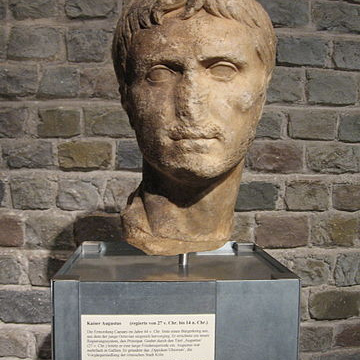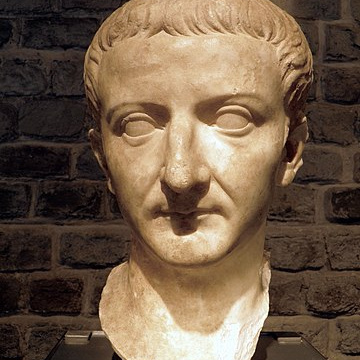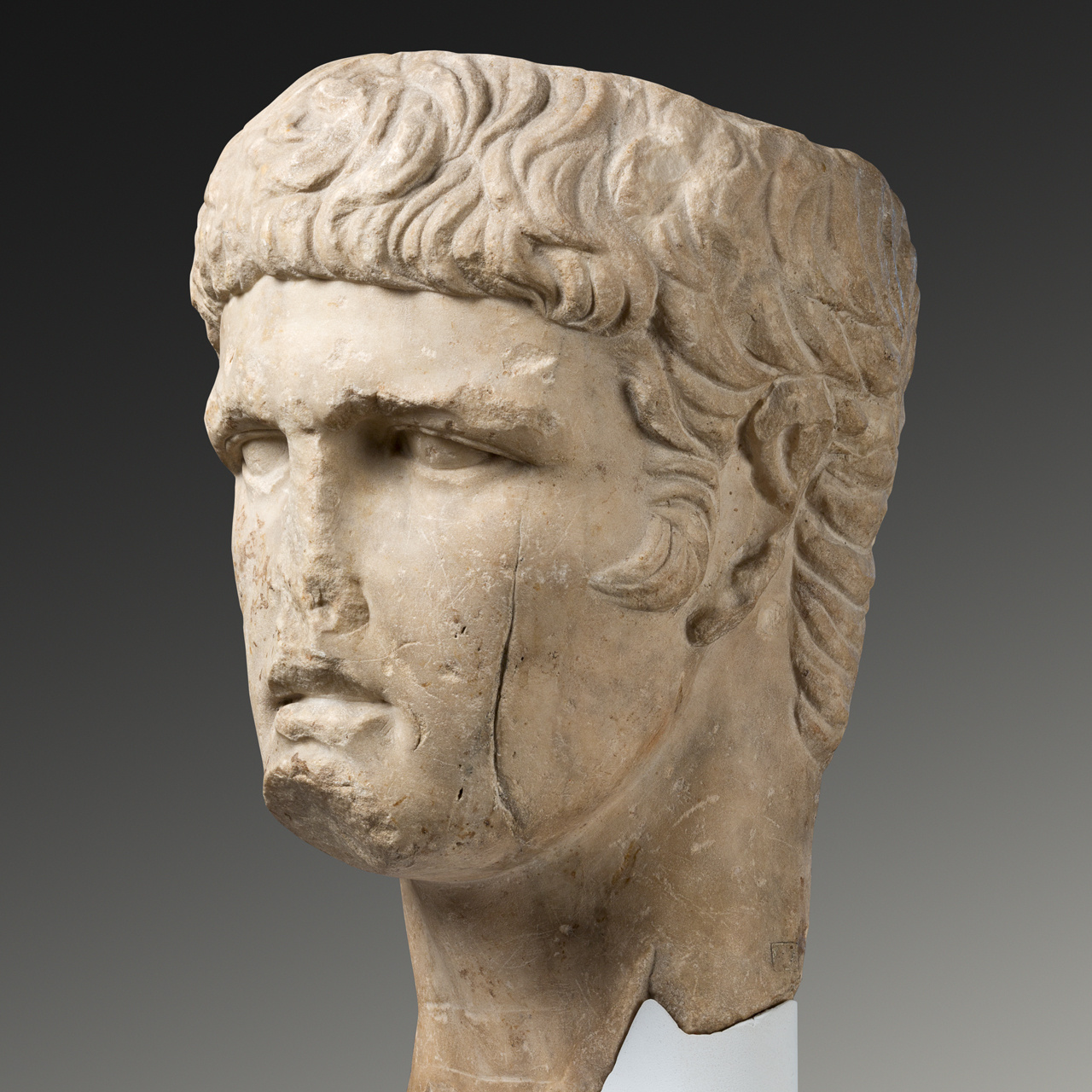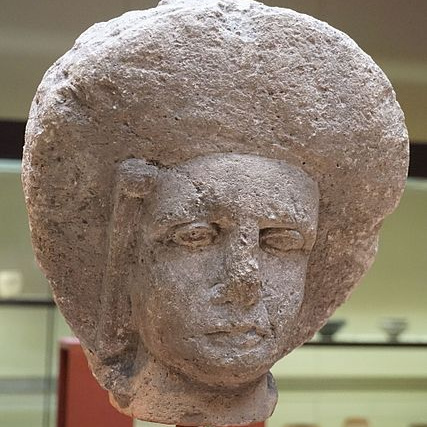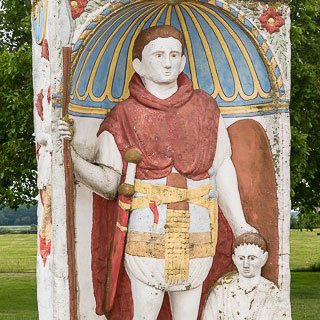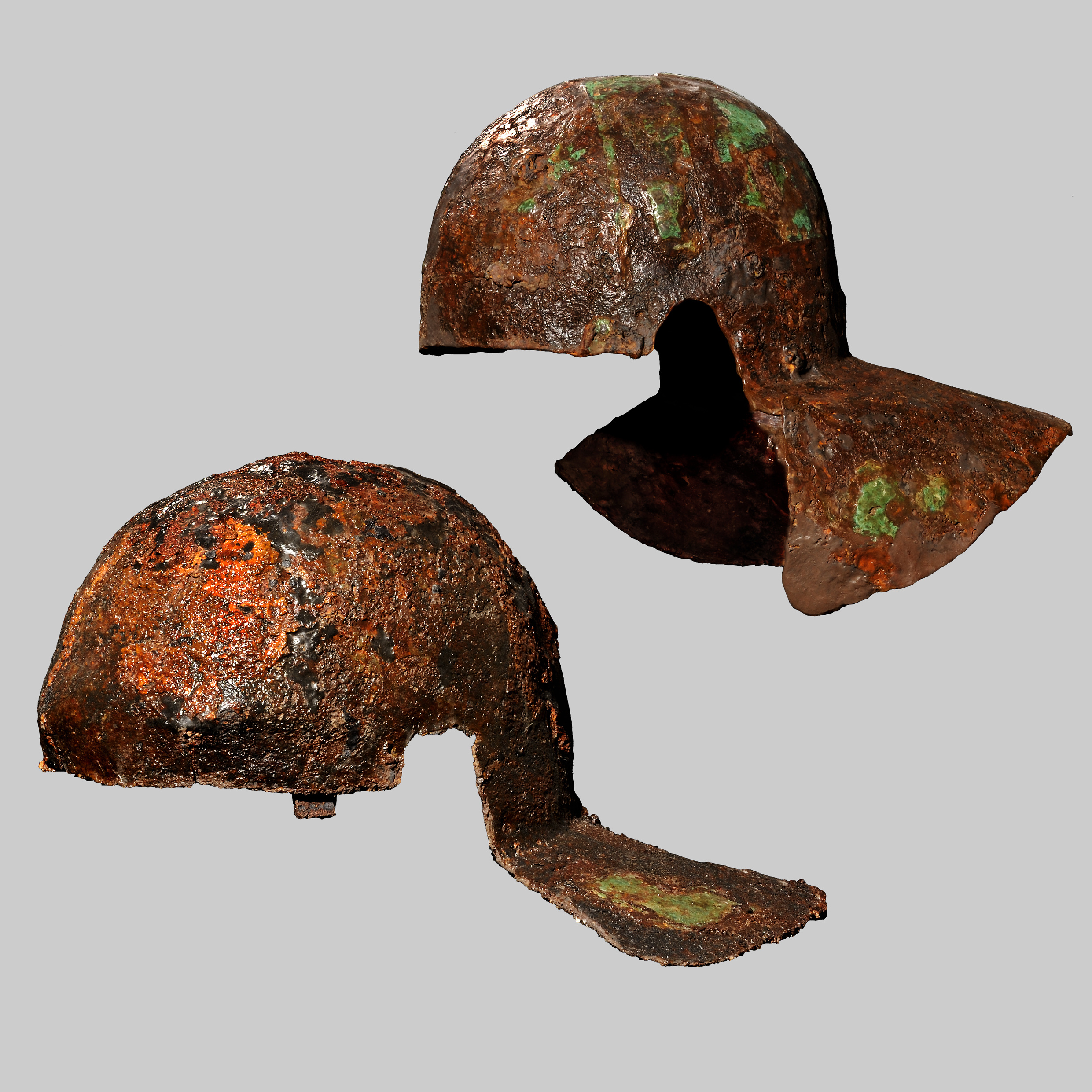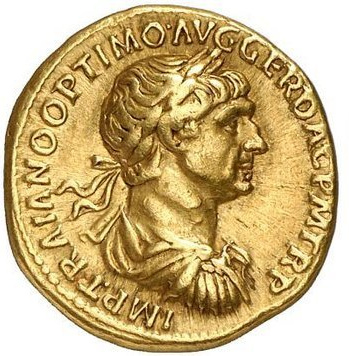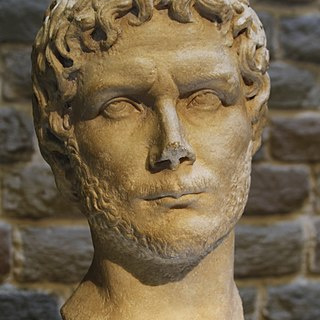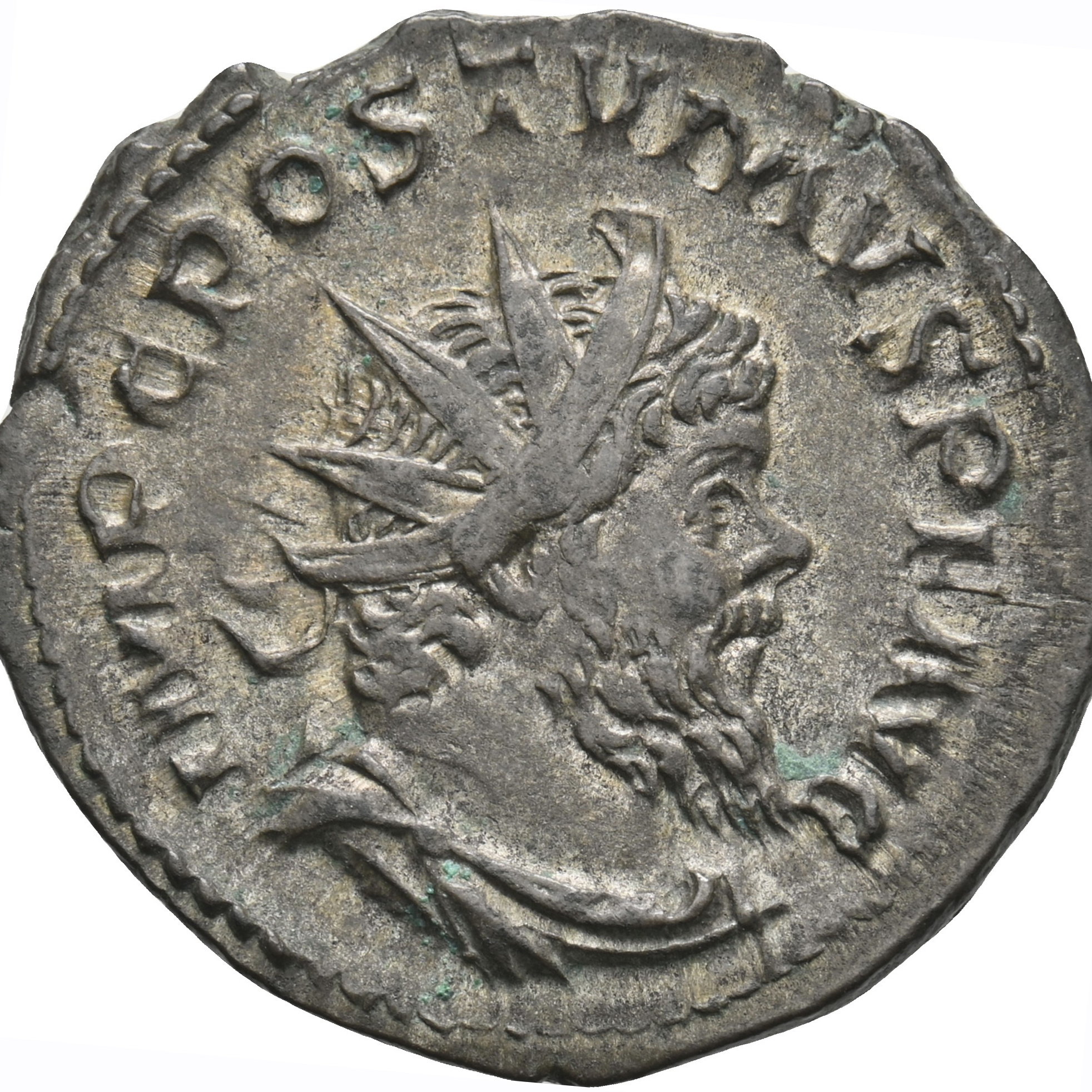The Roman province of Lower Germania
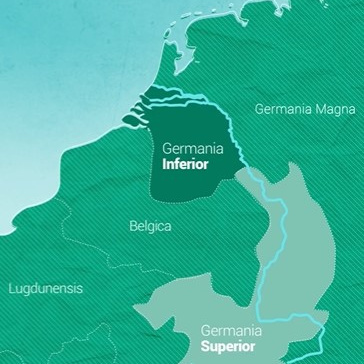
The Latin term ‘provincia’ initially only meant "task", "office" or "service". Roman provinces therefore served as administrative units at first. In 241 BC, the Romans designated the island of Sicily, which they had previously taken from the Carthaginians, as their first province. This was Rome's first pioneering step from a local to a supra-regional power. By the end of the Republic, the entire Mediterranean region was under Roman rule. And under the Roman emperors, the Empire eventually extended from the province of Britannia in the north to Aegyptus in the south and from Lusitania (parts of modern-day Portugal and Spain) in the west to Syria in the east. Some of the new territories conquered in the course of this expansion could not be held by the Romans for long. For example, the eastern border province of Armenia, which was established at the beginning of the 2nd century under Emperor Traian, was lost again after just a few years, after the Empire had already expanded to 45 provinces by then. Lower Germania, on the other hand, was one of the provinces that existed permanently, although it was very often caught up in internal Roman disputes and Roman-Germanic conflicts.
In order to understand how the Germanic provinces were formed geographically, we need to take a look at their previous history. When Julius Caesar reached the Rhine during the Gallic Wars and even crossed it twice in 55 and 53 BC, he already saw the river as the border of his conquests. The conquered territories on the left bank of the Rhine belonged to the Roman province of Gaul. For the time being, however, the Romans did not settle these territories close to the border or utilise them economically, especially as the area was now heavily depopulated after the devastating war against the Eburones, who had previously lived here. There was a lack of sedentary people with local knowledge who could help build and support the economic infrastructure. In addition, over the next few decades, the Romans focused their attention on internal political conflicts. It was not until more than 30 years after Caesar's death, after the end of the Republic had already been sealed, that the planned development of the areas north of the Alps began.
In doing so, Emperor Augustus attempted to reach far beyond the old lines and bring large areas from the Rhine to the Elbe under Roman control.
From the year 12 BC, military camps along the Lippe helped to secure the newly acquired territories, which would later become part of the new province of Germania planned by Augustus. Early signs of civilian activities can be recognised, for example, in the area around the Haltern military camp, where the first potteries were already in operation. However, the Emperor's grand expansion plans came to nothing in AD 9 with the famous Varus Battle. Varus was an experienced commander. He had already commanded three legions as governor in Syria. In Germania, he even had five legions under his command. During the uprising of the Germanic tribal prince Arminius, Varus was ambushed with three legions. These legions - legio XVII, legio XVIII and legio XIX - were destroyed. Faced with defeat, the general committed suicide on the battlefield. Emperor Augustus initially allowed the war to continue. His later successor Tiberius was initially able to achieve some successes in Germania as commander. Augustus' great-nephew, Germanicus, then took over command. Germanicus even had eight legions and over 1000 ships at his disposal.
When Emperor Tiberius had no real success with several revenge campaigns on the right banks of the Rhine, he ended the series of offensives in AD 16. The Rhine became the border. From the Alps to the mouth of the Rhine on the North Sea, there was now at first a military district called Germania. A few decades later, the administrative units Germania inferior (Lower Germania) and Germania superior (Upper Germania) emerged from this area.
The border between these two Germanic provinces was defined by a small stream, the Vinxtbach, which flows from the west through a deep valley in the Eifel and joins the Rhine at Bad Breisig (Rhineland-Palatinate). The official founding of the province of Lower Germania finally took place around AD 85 under Emperor Domitian. The provincial capital was Cologne, which had borne the title of a Roman colony since AD 50 and had been a flourishing centre for the Ubians resettled here by the Romans since Augustan times.
Many different tribes are summarised under the term "Germanic tribes". The Germanic tribes themselves did not produce any texts about themselves; these were all written by Roman authors. The various Germanic tribes could have very different interests, some were friends with the Romans, others are described as enemies. Very significant for the origins and composition of the civilian population in Lower Germania was the early settlement of the tribe of the Ubians under the leadership of the general Marcus Vipsanius Agrippa. The Ubians were originally located on the right bank of the Rhine, between the mouths of the rivers Sieg and Main. The tribe was loyal to the Romans from an early stage, which gave them a special position among the Germanic tribes. During his second governorship, Agrippa relocated the Ubians to the left bank of the Rhine in 19 BC with the aim of "guarding the Rhine and not to be guarded", as the historian Tacitus emphasised. The Ubians therefore enjoyed the full trust of the Romans, whereas they were viewed with suspicion by their Germanic neighbours in their home region.
A new settlement, the Oppidum Ubiorum - the settlement of the Ubians - was built in the centre of today's city of Cologne in an area protected from flooding.
A central sanctuary was also established in Cologne, the so-called Ara Ubiorum (Altar of the Ubians). However, not only the Ubians and the population living on the left bank of the Rhine, but also the inhabitants of the areas on the right bank of the Rhine newly conquered by Emperor Augustus were allowed to worship the goddess Roma and the emperor here. Under Emperor Claudius, the Oppidum Ubiorum was elevated to the status of a colonial city with full Roman city rights in AD 50. Its free inhabitants, among them descendants of the Ubian resettlers, former soldiers and newcomers from many other regions of the empire, thus became citizens of Rome. The city's new name, Colonia Claudia Ara Agrippinensium, referred to Agrippina, the influential wife of Emperor Claudius. Agrippina had been born in Cologne.
Just a few years after the resettlement of the Ubians to the southern Rhineland, another major resettlement programme took place in the Lower Rhine region. Parts of the Sugambrians, who lived on the right bank of the Rhine, were resettled in the area around Xanten. From then on, they called themselves Cugerners. A colony city (Colonia Ulpia Traiana / Xanten) was also to be established here - albeit much later, around AD 100.
The particular importance of the military district of Germania and the Germanic provinces Germania inferior and Germania superior that emerged from it lay above all in the fact that an above-average number of military personnel were stationed here. Legionary bases and auxiliary forts were lined up close together along the external border. This was intended to protect the country from attacks by hostile Germanic tribes.
The loyalty of the troops stationed there was a very important power factor for any ruler. If the soldiers were not loyal to the emperor, he was threatened with the imminent loss of the throne and thus death. Uprisings generally broke out far away from the capital Rome, on the outer borders of the Imperium Romanum. For example, in AD 69, just a few months after the suicide of Emperor Nero, the governor Vitellius had himself proclaimed emperor in Cologne. This was not legitimate, as another ruler had come to the throne in Rome in the meantime. In order to justify his claim, Vitellius took Julius Caesar's sword, which was kept in the temple of the god Mars in Cologne. He thus symbolically presented himself as the rightful head of state. The armies in Germania supported Vitellius. They marched with him across the Alps and asserted his claim to power after several battles.
During the reign of Vitellius, there was an uprising in Lower Germania that lasted about a year and is now known as the "Batavian Revolt". The leading figure in the revolt was Iulius Civilis, who had previously been the commander of Roman auxiliary troops in the home territory of the Batavian tribe around Nijmegen/Noviomagus. The Roman historian Tacitus reports battles near Bonn, Cologne and Krefeld-Gellep/ Gelduba as well as the siege of the legionary base of Vetera near Xanten. The double legionary base at Vetera fell and was not rebuilt under the newly proclaimed Emperor Vespasian, the founder of the Flavian dynasty. A new legionary base was only built some time later near the Rhine to the south of the civilian settlement, the later city of Colonia Ulpia Traiana. The victorious sixth legion was "rewarded" with a stone legionary base in Neuss/Novaesium. The Flavian dynasty knew very well how to secure the loyalty of the military.
After the end of the Batavian uprising, the fertile loess-region north of the Eifel began to flourish. Estates were rebuilt or newly constructed on agricultural land. Under Emperor Domitian, major projects were realised in Cologne, such as the construction of the Eifel aqueduct or parts of the city wall.
Emperor Nerva died in Rome on 28 January 98 AD. His adopted son and successor Trajan was staying on the Rhine at the time. Trajan received the news in Cologne. The new ruler did not return to Rome immediately, but initially remained in the provinces on the Rhine and Danube. Around AD 100, he raised a settlement to the status of a city, the Colonia Ulpia Trajana (near Xanten). This is where the Xanten Archaeological Park is located today.
Peace largely prevailed on the Rhine border in the second century AD, while the Parthians had to be fought in the far east of the Roman Empire and the Marcomanni in the Danube region. In the 3rd century, both internal Roman conflicts and hostile attacks shook the entire Imperium Romanum. In AD 235, Emperor Severus Alexander and his mother were murdered by mutinous soldiers in Mainz. This was followed by the crisis-ridden and turbulent period of the so-called "soldier emperors", most of whom were proclaimed by the army. The expectations placed on the respective ruler were therefore high. It was important for the soldiers that the emperor was personally present during particularly important military campaigns. In AD 256, Gallienus, who ruled together with his father Valerianus, came to the Rhine and won a victory there against Germanic tribes. Under his rule, a new mint was established in Cologne to mint money for the army's pay. During this time, there was also war in the east of the Empire. Gallienus' father fought against the Persians there and was taken prisoner of war.
At the same time, there were uprisings and plundering in the Danube provinces that spread as far as Rome. Emperor Gallienus therefore had to take military action in various places at the same time. He was no longer able to free his father Valerianus, who eventually died in Persian captivity. The defence of the Upper Germanic Limes began to crumble. Some forts were abandoned, not only because the Roman soldiers capitulated to the invading Germanic tribes, but also because great dissatisfaction spread among the army. As a result, the "built limes" in Upper Germania fell in AD 259 /260 and the Romans abandoned large areas there.
During this time, a new centre of power emerged in Lower Germania. At the Rhine, Germanic tribes had also plundered Roman territory. To secure the river border, Gallienus had left his son Saloninus in Cologne with experienced officers and advisors. When a large group of Germanic marauders tried to return to their homeland, they were confronted and defeated by a high-ranking officer named Postumus. The Roman soldiers then divided the spoils of the raid among themselves and proclaimed Postumus emperor. Saloninus was killed. Such an illegal accession to the throne is known as a usurpation. Postumus was initially quite successful. He founded his own splinter state in the west, the so-called Gallic Empire, with Cologne as its capital. For a short time, the usurper Postumus ruled large parts of Germania, Gaul, Hispania, Britannia and Raetia. Today, these would be large areas of western Europe west of the Rhine and the Alps as far as Spain and Portugal, as well as northern England as far as Hadrian's Wall.
About ten years after Postumus had seized power, there was an uprising against him in Mainz in AD 269. Postumus was able to successfully put down this attempted coup. But when he tried to forbid his soldiers to reward themselves by plundering the city, he was killed by his own men. Under his successors, the Gallic Empire only existed for a few more years and was no longer ruled from Cologne, but from Trier. Under Constantine the Great, Trier was also to become more important than Cologne as the imperial capital.
In the early 4th century, the province of Lower Germania was given a new name. It was no longer called Germania inferior, but Germania secunda and was part of a larger administrative unit, the diocese of Gaul. According to a source from the Middle Ages, the Franks conquered Cologne in AD 459. This date marks the end of Roman rule in the Rhineland and what is now North Rhine-Westphalia.
